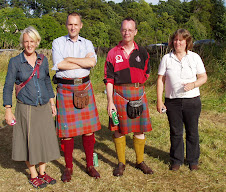I’m within
10 rounds or so of finishing the second toe-up sock. You are so absolutely
right, skeindalous, that the finishing of a sock is a thoroughly satisfying
experience. The difficulty here is that my Sock Project requires sudden bursts
of Learning Experience at inconvenient times of day. One can scarcely interrupt
one’s soap opera to go off to the computer and study a video.
So today, I
think, I must
(a) have another look at the
instructions for Jeny’s Surprisingly Stretchy Bind-Off. I’ve done it, it’s easy,
it works – just a matter of reminding myself what to do;
(b) take some time out during the day to
sit down in front of the computer with needles and the cast-on yarn for
Alexander’s socks and fire up a video and do a Turkish cast-on, knitting it far
enough that I can pick it up during the soap opera and glide pleasantly on.
(c) determine which yarn to use for
Alexander’s cast-on, Bedroom at Arles
I had a
look at my sock yarn situation yesterday:
The stripey one just behind the Zauberballs is the Italian flag, from Regia's "world ball" series. I'm looking forward to that. I'm looking forward to all of them -- but that’s
something close to a year of knitting you’re looking at, most of them fairly recent purchases. And Alexander's Van Gogh yarn isn't even there. And I found I had another
100 grams (one ball) of Hundertwasser. That was truly silly – I not
infrequently buy 150 grams for gents’ socks, so as not to have to change yarns
for the toe. But 200 grams of a yarn that can only be knit for ladies, is
ridiculous. I’ve put it in the Box to go to Strathardle and be given away.
Oh, dear.
Vegetable-growing
I thought,
in a burst of mental energy, that I might be able to face up to soil chemistry. I have recently taken on board a mnemonic which allows me to
remember which sort of soil is “acid” and which is “alkaline”. That’s a start.
I tried the
widipedia entry
on acid soil this morning, and all seemed to be going fairly well. It was
pretty chemical and technical, but I could see the shape of things. For a
while. There is a list of calcifuge (=lime-hating) plants from the presence of
which you can be pretty sure you’ve got an acid soil. Lots of old friends,
including lilac. Fine. That’s what we’ve got – I knew that anyway.
Then – this
can be viewed on the same screen – a list of plants with their pH preferences.
And sure enough, the ones I can grow come in at pH 6-6.5, or lower, and the
ones I can’t prefer pH 6.5-7. It’s all beginning to make sense – until I see
that lilacs prefer the highest alkalinity of all, 7.1-8.
This is
just wikipedia, and is obviously a mistake, one way or the other. But it’s sort
of depressing for one struggling to get a foothold.
And
something else I need to know – why does spreading manure (which I do) make
soil more acid?





It's got something to do with the ammonia produced as the manure breaks down, but I can't recall exactly what happens. The useful antidote though is mushroom compost, which is cheap, easy to handle, adds bulk and hummus to the soil and most importantly is alkaline. It's a really great mulch as it helps suppress weeds and conserve moisture. I prefer putting my limited supply of manure into the compost bin, which dilutes it a bit. I use mushroom compost as a mulch on 1/3rd of my beds every year. It keeps things in balance. The Old Style gardeners did add manure to the soil but following a strict crop rotation that also included liming the beds at the appropriate time in the rotation. If you've not been liming then it's no wonder your soil is becoming acidic.
ReplyDeleteBut using mushroom compost + manure enriched bin copost is a lot gentler imho.
What a wonderful picture of all that lovely sock yarn. I just arrived here in Mexico after a visit to Canada and after x-raying my bags at the airport, I was told they would have to look in one of them. My 25 paper back books looked like money in the x-ray!!! Also in the bag were 18 balls of sock yarn. He asked me what it was and when I told him he said wouldn't it be easier to buy socks. I tried to explain about the pleasure I received from seeing a pair completed, from pulling on a pair, and even seeing my socks on other people. He looked bewildered and I gave up - you have to be a sock knitter to understand.
ReplyDeleteRon
I think you'll find it's Regia World yarn shade 'Rome'; the shade 'Italy' has broader stripes...
ReplyDeleteI always cast on both socks at the same time but on separate needles. This way, I usually have one sock that can be knit mindlessly and do the parts that need concentration when I have time.
ReplyDeleteI also have taught many people to do the Turkish cast on. Do it, then rip it out and do it again and again - usually by the 4th time, it is set in memory. The important thing to remember is to turn your wrist when doing the 2nd half of the first row....not tuen the knitting around. Your second row of stitches should look like stockenette stitch - no purl bumps. Hope this hels.
There are some good gardening sites that explain how to lower soil pH, since a lot of gardeners are dealing with limestone (and therefore alkaline) soil, and most plants benefit from slightly acid soil (or soil within a fairly narrow range...they are able to absorb nutrients better in this range)
ReplyDeletehttp://www.ehow.com/info_12060100_natural-ways-lower-soil-ph-level.html
and
http://www.extension.umn.edu/distribution/cropsystems/components/7401_02.html
There are testing kits available to pin down what your soil (and sections of garden) pH is, and then of course if it's too acid, a little agricultural lime, or wood ashes can be used.
I love all the Sock Talk ... how do you get such lovely tight ribbing? go down a needle size????? Elizabeth
ReplyDeleteI used a ball of Zauberball yarn to make a shawl - I loved the way the colors melted into each other!
ReplyDeleteI used a ball of Zauberball (the color of the middle ball of the yarn in your picture) and loved the way the colors melted into each other!
ReplyDeleteLilacs will grow in acid soil but to bloom they want to be in nitrogen-poor soil; mulch them with wood chips or sawdust and they will bloom beautifully.
ReplyDeleteYou could always make ladies' knee-high socks with the two balls :D
ReplyDelete